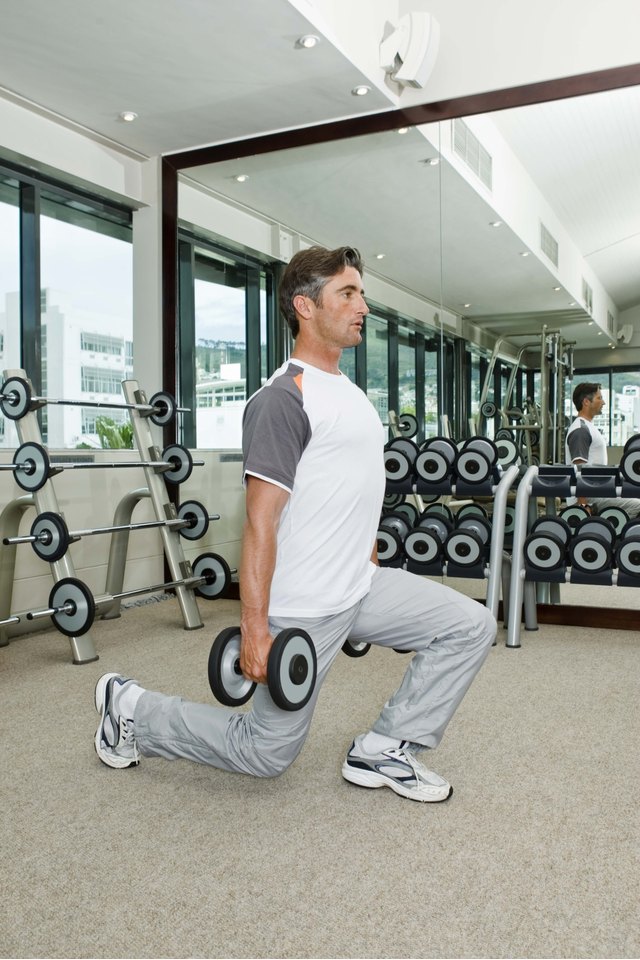Joints Used in a Lunge

If an exercise stresses your injured joint, you must avoid it. By understanding which joints are used in a lunge, you can protect yourself if you are recovering from an injury. In addition, as you determine which lower body exercises to include in your workout routine, review the direction the joints move to determine if the exercise will increase your discomfort. The lunge is a common lower-body strengthening exercise that uses the hip, knee and ankle joints.
Basic Movement
A forward lunge primarily strengthens your gluteal muscles (those that make up your bottom), hips and upper legs. The muscles in your lower legs stabilize the movement, so receive some strengthening benefits as well. Perform a lunge from a standing position using either your body weight or a dumbbell held in each hand. Lift your right foot off the floor and balance on your left leg. Step forward with your right foot approximately two or three feet. Place your right foot on the floor. Bend both knees and lift your left heel off the floor. Keep your right knee in line with your right heel. Lower until your right knee to a 90-degree angle. Push off the floor with your right foot and return to a standing position. Repeat the lunge with your left leg.
Hip Movement
The hip flexes and extends when you perform a lunge. You begin in a standing position, with no angle in your hips. When you step forward, during the downward phase of the lunge, your lead leg hip flexes as you decrease the angle of your hip joint. During the upward phase of the lunge, your hip extends as you increase the angle of your hip joint and return to a standing position.
Knee Movement
The knee also flexes and extends during a lunge. Your knees flex, or decrease the angle behind the joints, as you lower into the lunge. The muscles in your upper legs contract to steady your balance in this position and to keep the knee flexion from bending too far. Your knees extend as you push off the floor, straighten your legs and return to a standing position. The muscles on the front of your upper legs contract and shorten to extend the knees.
Ankle Flexion
The movement at your ankles is known as flexion. When your ankle dorsiflexes, your toes point toward your shins. This occurs on the back leg during the downward phase of the lunge. When your ankle plantar flexes, your toes point toward the floor. Plantar flexion occurs on your front leg during the upward phase of the lunge; when you push off the floor.
References
Writer Bio
A mother of two and passionate fitness presenter, Lisa M. Wolfe had her first fitness article published in 2001. She is the author of six fitness books and holds an Associate of Arts in exercise science from Oakland Community College. When not writing, Wolfe is hula-hooping, kayaking, walking or cycling.
